Go to Market Strategy Sample: The Essential Guide 2025


Did you know that 84% of SaaS startups fail because they lack a strong go to market strategy sample to guide their launch and growth? In the fast-paced world of B2B software, simply having a great product is no longer enough. Leaders need proven frameworks, powerful alignment across teams, and the latest Agentic AI to thrive in a crowded marketplace.
This guide gives you a go to market strategy sample built for 2025 realities. You’ll get a step-by-step process, see how to connect product, marketing, and sales, and discover how Agentic AI drives smarter execution and measurable results. Ready to unlock scalable growth and outperform your competition? Follow this actionable roadmap.
What is a Go to Market Strategy?
A go to market strategy sample is not just a launch checklist for B2B SaaS or enterprise software. It’s a dynamic, cross-functional plan that unifies product, marketing, and sales into a single engine for growth. Instead of a one-time event, GTM is a continuous process that adapts as your market and customers evolve.
At its core, a go to market strategy sample includes several key components:
- Market segmentation to identify your ideal customer profiles and verticals.
- Positioning and messaging that set your product apart.
- Pricing and packaging tailored for your audience.
- Channel selection to reach buyers where they are, from direct sales to digital marketplaces.
- Sales enablement that arms your teams with the right content and tools.
For B2B SaaS, alignment between product, marketing, and sales is essential. When these teams work as one, companies see up to 36% faster revenue growth, according to HubSpot (2023). Take Slack, for example. The company shifted from a product-led approach to a sales-led model as it expanded into enterprise, blending PLG with traditional sales. Salesforce, meanwhile, continually refines its GTM playbook to capture new markets and outpace rivals.
Digital transformation is accelerating this evolution. Agentic AI, or autonomous AI agents, now automate data analysis, personalize outreach at scale, and provide real-time insights for GTM teams. This technology is redefining how SaaS leaders execute and optimize their strategies.
If you want to see how these principles play out in the real world, explore this go-to-market strategy sample collection for actionable examples from leading SaaS companies.
A strong GTM strategy is the backbone of sustainable pipeline growth, ARR acceleration, and market leadership in 2025.

Step 1: Market Analysis and Segmentation
A successful go to market strategy sample always begins with precise market analysis and segmentation. For SaaS and enterprise software in 2025, this step is more critical than ever. Understanding your target audience, mapping the competition, and leveraging Agentic AI set the stage for pipeline growth and lasting differentiation.

Understanding Your Target Market
Identifying your ideal customer profile (ICP) and building detailed buyer personas is the foundation of a robust go to market strategy sample. Start by analyzing your Total Addressable Market (TAM), Serviceable Available Market (SAM), and Serviceable Obtainable Market (SOM). Segment by industry verticals, company size, and firmographics to pinpoint high-potential accounts.
- Use data sources like LinkedIn, G2, and Crunchbase for real-time insights.
- Leverage Agentic AI to aggregate and synthesize large volumes of market data, revealing patterns humans might miss.
- For example, SaaS leaders often segment by user roles or company maturity, as seen with project management platforms targeting startups versus enterprises.
Agentic Automation accelerates persona creation and continuously updates your understanding as the market evolves. For a practical template to structure this process, explore the GTM Strategy Template Guide.
Competitive Landscape and Positioning
Mapping the competitive landscape is essential for any go to market strategy sample. Begin with a SWOT analysis to identify your strengths and weaknesses relative to key players. Use Blue Ocean Strategy to search for whitespace where your solution can stand out.
- List and categorize direct and indirect competitors.
- Monitor their product updates, pricing, and messaging using Agentic AI for automated tracking and insight generation.
- Regularly benchmark your positioning to ensure relevance and differentiation.
Notion’s rise in the crowded productivity space is a clear example of effective positioning. According to Gartner, 76% of SaaS leaders cite competitive positioning as their top GTM challenge. By automating competitive intelligence, you stay agile and ready to pivot as markets shift.
Step 2: Product-Market Fit and Value Proposition
Achieving product-market fit is the heartbeat of any successful go to market strategy sample. Without clear validation that your product solves a real problem for a defined audience, even the best GTM tactics can fall flat.
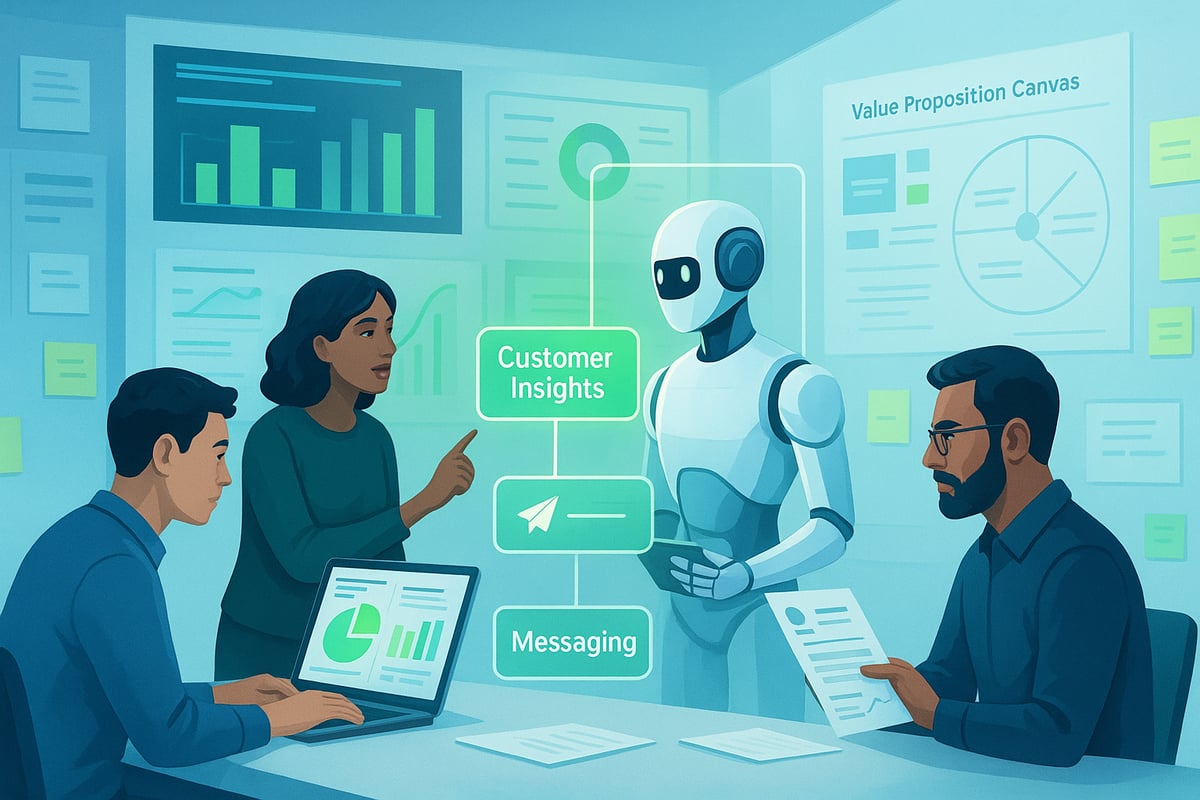
Validating Product-Market Fit
Before scaling, every go to market strategy sample needs robust product-market fit. Start by interviewing early users, measuring Net Promoter Score, tracking churn, and analyzing usage data.
- Conduct customer interviews to uncover real needs
- Review NPS and churn to gauge satisfaction
- Monitor feature adoption for engagement signals
Zoom’s rapid PMF validation during the pandemic is a prime example. AI-driven analytics, especially Agentic AI, accelerate discovery by surfacing patterns in user behavior. Startups with validated PMF achieve 2.5x ARR growth, making this step essential for sustainable SaaS momentum.
Crafting a Compelling Value Proposition
After PMF, clarify your value proposition to differentiate in crowded markets. Map customer pain points using the Value Proposition Canvas or Jobs-To-Be-Done framework.
- Identify urgent problems your solution addresses
- Translate features into clear business outcomes
- Highlight unique benefits and proof points
Agentic AI tools help personalize messaging for each segment, scaling relevance across channels. HubSpot’s evolution from marketing automation to a CRM suite shows the power of consistent, evolving value. For a hands-on approach, download a Go-to-Market Plan Template to structure your messaging and ensure alignment across your go to market strategy sample.
Step 3: Channel Strategy and Sales Enablement
Building a go to market strategy sample that drives revenue starts with choosing the right channels and empowering your teams. Each channel you select can shape your brand's reach, customer acquisition speed, and how effectively you scale in the SaaS landscape.
Selecting and Optimizing GTM Channels
Every go to market strategy sample must identify the channels best suited for its ICP. For SaaS and enterprise, this often means blending direct sales, partners, marketplaces, inbound, and outbound tactics.
- Direct sales: Ideal for high ACV, complex deals.
- Partner/reseller: Expands reach rapidly.
- Marketplaces: Drives PLG, especially for integrations.
- Inbound/outbound: Balances scale with personalization.
Agentic AI enables orchestration across these channels, automating lead routing, campaign timing, and even optimizing channel mix in real time. Atlassian’s marketplace-driven approach is a prime example, blending automation and human touch for scale.
Building a Unified Sales and Marketing Engine
Alignment is the backbone of a winning go to market strategy sample. When sales and marketing operate as one, pipeline generation accelerates and revenue grows.
- Shared KPIs and dashboards keep everyone focused.
- Integrated tech stacks connect data and workflows.
- Regular alignment meetings drive accountability.
Adobe’s unified revenue teams demonstrate how cross-functional collaboration fuels growth. According to LinkedIn, aligned teams achieve 208 percent higher marketing revenue. For more on avoiding common pitfalls, see Why Most GTM Strategies Fail.
GTM Consult: B2B SaaS GTM Advisory
GTM Consult helps SaaS leaders fuse product, marketing, and sales into a single growth engine. Their data-driven playbooks and operational dashboards accelerate pipeline and ARR.
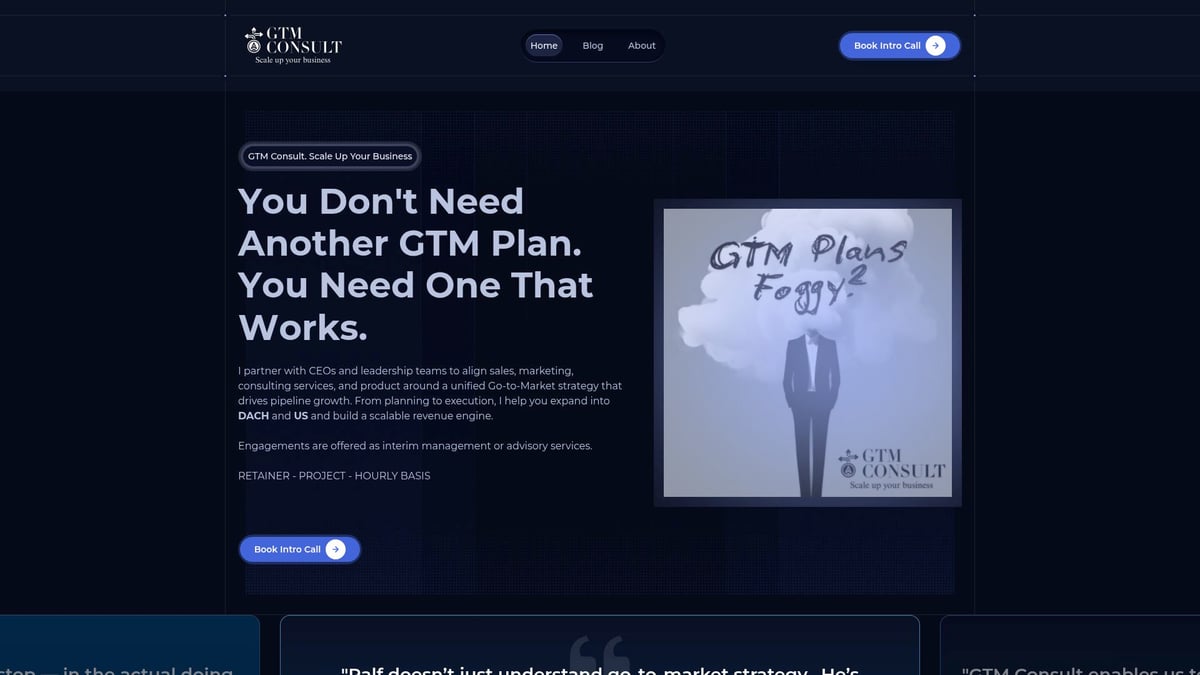
Clients report over 60 percent pipeline contribution and 300 percent lead growth. With flexible advisory models and interim executive support, GTM Consult enables organizations to set up, scale, and win quickly.
Step 4: Leveraging Agentic AI and Automation in GTM
In 2025, integrating Agentic AI into your go to market strategy sample is no longer optional for SaaS and enterprise software leaders. Agentic Automation is revolutionizing how teams execute, scale, and personalize every step of the GTM journey. Let’s explore how these AI agents unlock new growth possibilities and transform traditional approaches.
The Rise of Agentic AI in Go-To-Market Execution
Agentic AI refers to autonomous, goal-driven agents that can manage complex GTM tasks like lead scoring, personalized outreach, and real-time analytics. Unlike traditional automation, Agentic AI adapts to changing data and customer behavior, making your go to market strategy sample more agile and responsive.
Consider how AI-powered SDR bots now qualify leads in minutes, or how onboarding agents guide users to value instantly. The impact is measurable: “70% of SaaS companies plan to increase AI investment for GTM in 2025” (IDC, 2024). According to SaaS go-to-market strategy for an agentic AI world, companies that embrace Agentic AI see faster market adaptation and more precise customer targeting.
- Autonomous lead qualification
- Hyper-personalized email and chat outreach
- Dynamic competitor tracking and insight generation
Agentic AI is now the backbone of a winning GTM playbook.
Implementing Agentic Automation for Revenue Growth
To embed Agentic Automation into your go to market strategy sample, start by selecting AI tools that integrate smoothly with your CRM and marketing stack. Train cross-functional teams to collaborate with AI agents, not just operate them. Experimentation is key: use campaign optimization tools to A/B test messaging, targeting, and outreach sequences.
Real-world success? Drift’s conversational AI accelerates pipeline by automating lead engagement and nurturing. Best practices include:
- Set clear KPIs and goals for AI-driven campaigns
- Review analytics dashboards daily for real-time performance
- Foster a culture of rapid testing and iteration
The result: increased conversion rates, lower CAC, and shorter sales cycles. In a market where speed and precision define winners, Agentic Automation enables SaaS teams to scale with confidence.
Step 5: Measuring, Iterating, and Scaling Your GTM Strategy
Measuring the success of your go to market strategy sample starts with tracking the right metrics. Focus on pipeline velocity, ARR growth, CAC, LTV, and win rates. Each metric offers a different lens on your SaaS growth engine and helps pinpoint where to double down or pivot.
| Metric | Why It Matters | Example Benchmark |
|---|---|---|
| Pipeline Velocity | Speed of deal progression | 20%+ quarterly growth |
| CAC | Cost to acquire a customer | $1.14 per $1 ARR |
| LTV | Customer lifetime value | 3x CAC |
| Win Rate | Sales effectiveness | 25-35% |
Closed-loop reporting is essential. It links marketing, sales, and product data in real time, allowing teams to make data-driven decisions. Leading SaaS organizations like Snowflake and Datadog use agile sprints, OKRs, and feedback loops to iterate fast and drive continuous improvement.
Agentic AI is changing the game. With autonomous analytics, teams can spot trends, test new GTM experiments, and optimize campaigns quickly. For example, real-time dashboards powered by Agentic Automation help catch churn risks and identify high-potential segments.
Looking for benchmarks? The State of B2B SaaS in 2025 offers insights from over 400 SaaS companies using these techniques to scale efficiently. According to Forrester, continuous GTM iteration results in 30% higher customer retention, while the SaaS Go-To-Market Report highlights the impact of rapid experimentation on ARR growth.
To maximize your go to market strategy sample, build a rhythm of quarterly reviews, rapid experimentation, and honest cross-functional retrospectives. With Agentic AI and data-driven frameworks, you can scale faster, keep teams aligned, and turn every lesson into a growth opportunity.
After walking through the vital steps of building a standout go to market strategy—everything from market analysis to leveraging Agentic AI—you might be wondering how to actually put this into action for your SaaS business. I’ve seen founders, CMOs, and sales leaders hit that same crossroads, faced with aligning teams and turning strategy into real, repeatable growth. If you want to bridge that gap and see what this could look like for your unique journey, why not take the next step? Let’s talk through your challenges, ambitions, and where you want to go. Book Your Personal Intro Call

Latest From
The Blog
Go To Market Strategy Consulting Guide For 2025 Success

Go To Market Strategy McKinsey Guide For Success 2025

Crossing the Enterprise Chasm: A Practical Guide to Sales-Led Growth (SLG)


Let's Build The Future Together



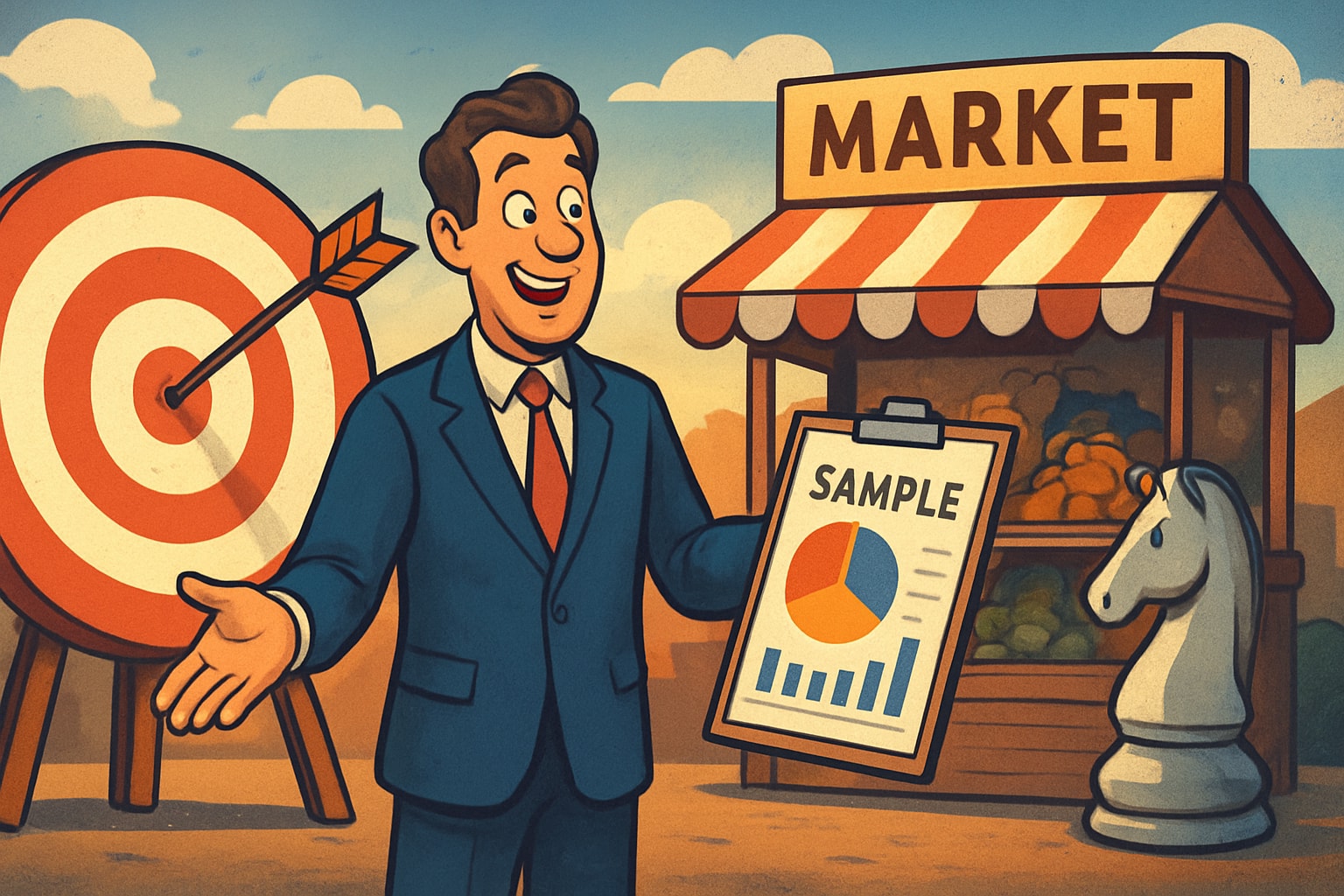
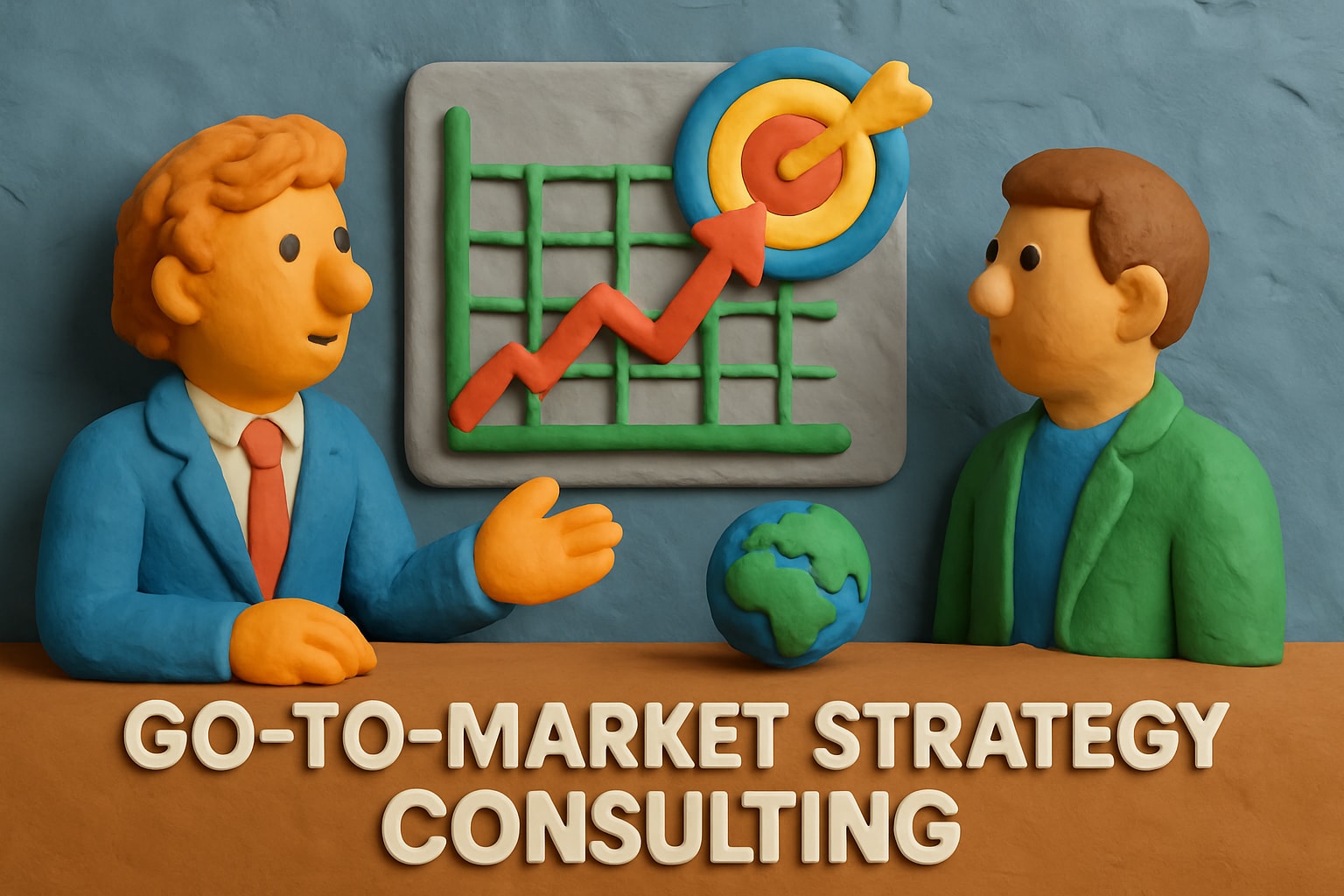
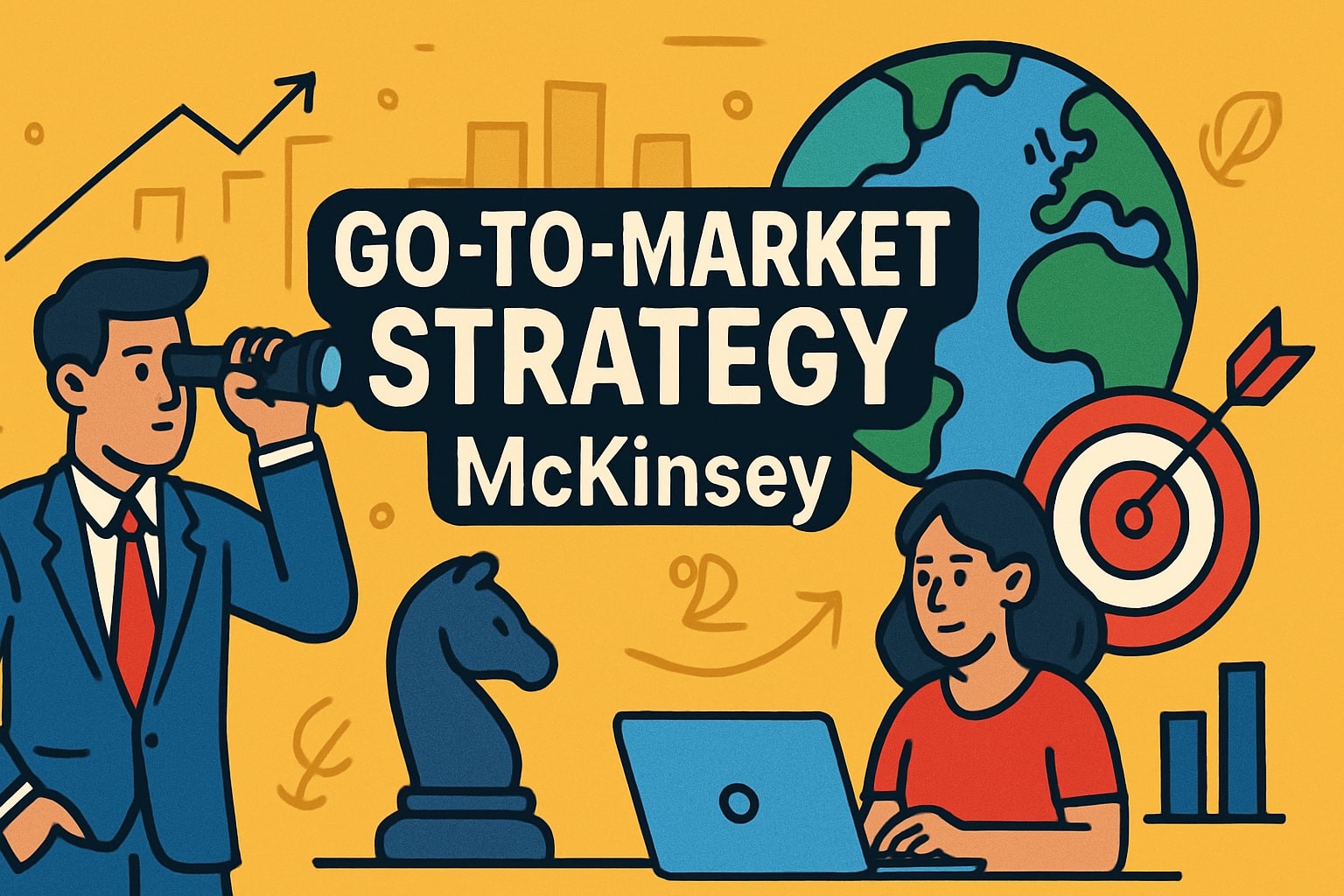
.jpg)